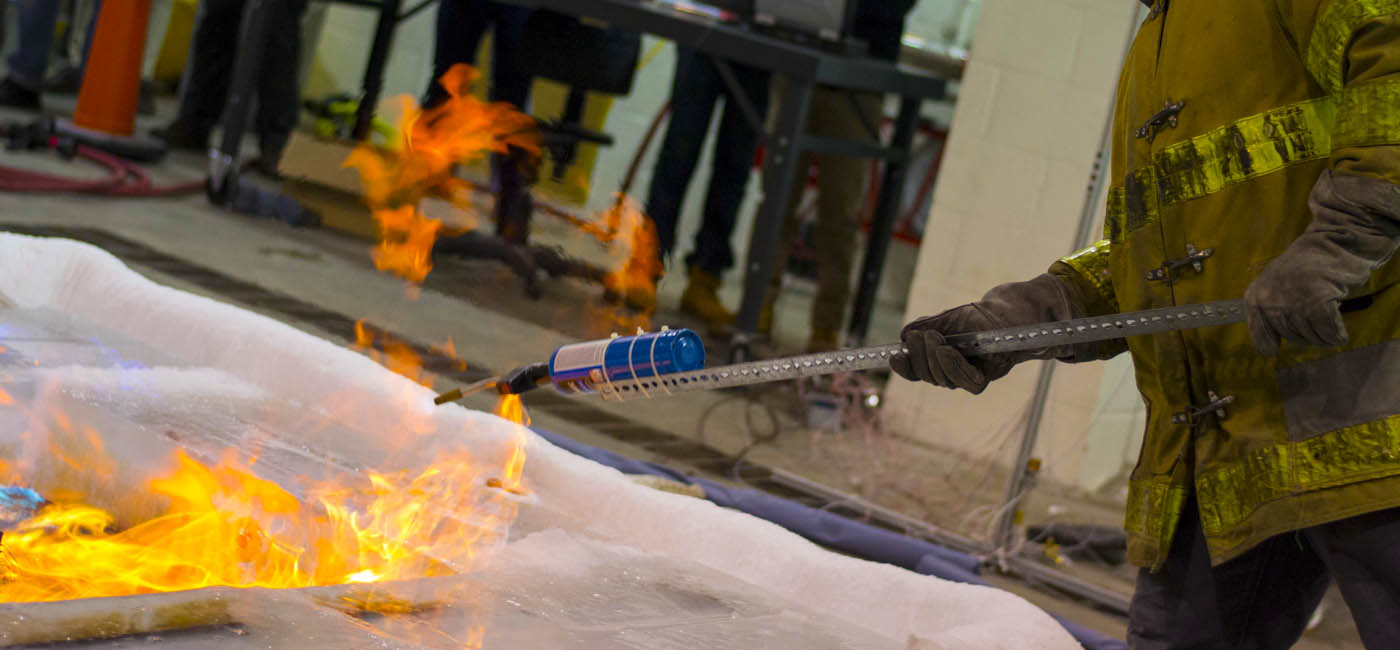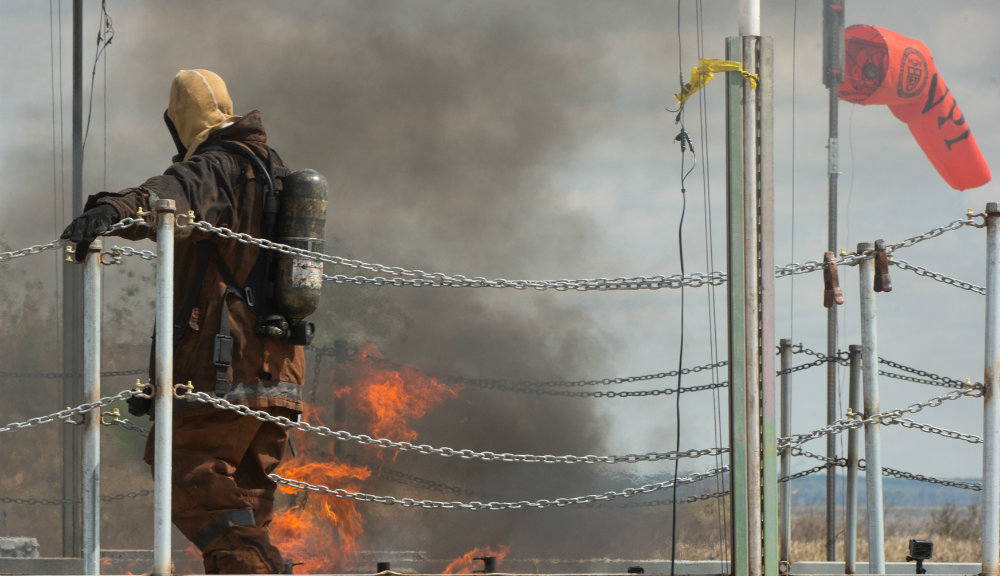New investigative reports by an NBC News team on explosion risks associated with commonly used red plastic gasoline cans draw heavily on the expertise of fire safety experts at WPI and include a recreation of tests conducted in WPI's Combustion Laboratory as part of a research program funded by a national standards-setting organization. The first report aired on Dec. 4, 2013, on the Today Show. A second segment is expected to air on the NBC Nightly News.
> Watch the Today Show report.
> Watch WPI's Bran Elias Demonstrate for NBC News How a Gas Container Can Explode.
> Read the NBC News investigative report on gas can safety risks.
> Read a follow-up report on NBC News about a new Consumer Product Safety Commission announcement issued in response to the Today Show segment.
The segments, reported by NBC News correspondent Lisa Myers, focus on the potential for plastic gas cans, millions of which are in garages and sheds across the country, to explode when they are in the vicinity of an ignition source. This risk and possible means for mitigating it are the focus of a multi-year study being conducted by Ali Rangwala, associate professor of fire protection engineering at WPI, and Brian Elias, a PhD candidate in fire protection engineering. The study, currently underway in the Combustion Laboratory in the Salisbury Laboratories building, is funded by ASTM International, an organization that establishes standards for consumer products, including gas cans.
In the first phase of the study, Rangwala and Elias determined that the greatest explosive risk is present when the cans contain 30 milliliters or less of gasoline (equivalent to about 2 tablespoons), when the air is cool, and when the can is tilted at a common pouring angle of 42 degree. Under those conditions, a mixture of air and fuel vapors can flow out of the can's spout. If an ignition source is nearby, the mixture can ignite and a flame can propagate up the spout and into the can, causing the air/fuel mix in the can to detonate. Those conclusions were detailed in a paper published in Fire Science Journal in May 2013.
Myers and an NBC News crew came to campus twice this fall to interview Rangwala and Elias about their research and to film tests that duplicated the experimental set-up used in Phase 1 of the ASTM study. In the tests, five plastic cans supplied by NBC were filled with 30 milliliters of gasoline, tilted at a 42 degree angle, and exposed to an external flame. All five cans exploded. A foil-covered vent cut in the cans safely directed the explosion away from the camera and onlookers.
In the second phase of the ASTM study, Elias and Rangwala are studying possible methods of preventing explosions in gas cans. Among the means being explored are flame arrestors, devices made from plastic or metal mesh that may prevent flames from traveling from the spout into the interior of the cans.


